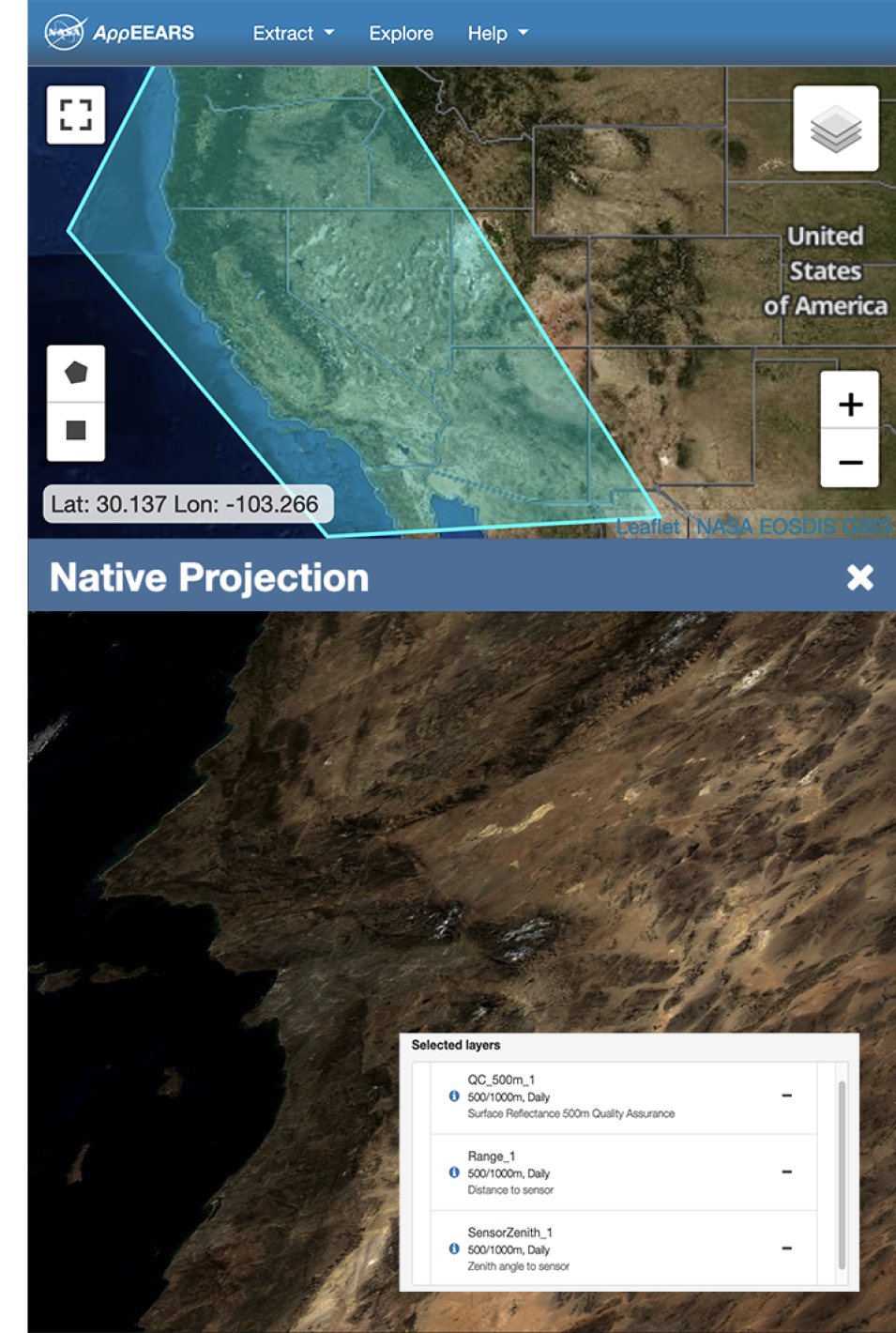A Geographic Information System (GIS) connects a wide range of geospatial data to a map and integrates location data (where things are) with various types of descriptive information (what things are like there). The vision of NASA's Earth Science Data Systems (ESDS) Program is to identify and deliver high value Earth science data in formats compliant and compatible with GIS standards; to ensure data are interactive, interoperable, accessible, and GIS-enabled through primary GIS platforms; and to provide the maximum impact to research, education, and public user communities requiring data visualization and spatial analysis.
Earthdata provides a range of data tools for accessing and using GIS-based Earth science data. In general, these tools require a basic understanding of GIS and GIS-based applications. If you are unfamiliar with GIS or want more information about some of the terms and concepts described below, view more information about the basics of GIS.





